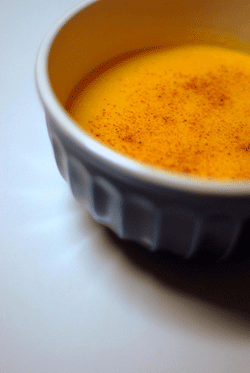Winter squash come in a delightful array of unusual shapes and colors. In pioneer days, squash were a mainstay of the winter diet. A late fall crop, their thick, tough skins allow these hardy vegetables to be stored for up to three months, a significant benefit for early farm families that were forced to depend on a limited selection of winter and root vegetables to supply essential vitamins and nutrients during long, cold winters. (See our previous post on choosing and storing winter squash.)
Winter squash are easy to prepare and cook when living independently. The same cooking techniques can be used to prepare most varieties of winter squash.
How to Prepare Squash
Cut squash in half lengthwise and scoop out the seeds and surrounding fibrous tissue. Squash can be baked in its skin or the tough outer skin can be removed with a vegetable peeler before cooking.
Suggestions for Cooking Squash:
- Winter Veggie Roast: Mix thick-chunks of squash with onion wedges, quartered bell peppers and other vegetables. Mix sweet or savory spices (try cinnamon, nutmeg, and ginger or cumin, coriander, and cayenne pepper) with olive oil and honey. Toss to coat vegetables. Roast in a single layer at 375 degrees F. until vegetables are tender (45-50 minutes).
- Creamy Squash Puree: Steam squash until tender. Puree until smooth with butter and sour cream.
- Squash Sauté: Sauté chunks of squash with chopped garlic in olive oil. Add 1/2 inch water to the pan and steam until tender.
- Sweet Baked Squash: Sprinkle cut up squash with brown sugar; drizzle with melted butter. Bake at 375 degrees F. until tender (45-50 minutes). Garnish with raisins and chopped pecans.
Enjoy winter's bounty and include vitamin-rich winter squash in your diet. Always looking for ways to feature locally-sourced produce on the menu, our Kendal at Oberlin chefs are cooking up delicious winter squash recipes to serve with fall and winter meals, also available to Kendal at Home members. To learn more, contact us today.
Photo: meg













